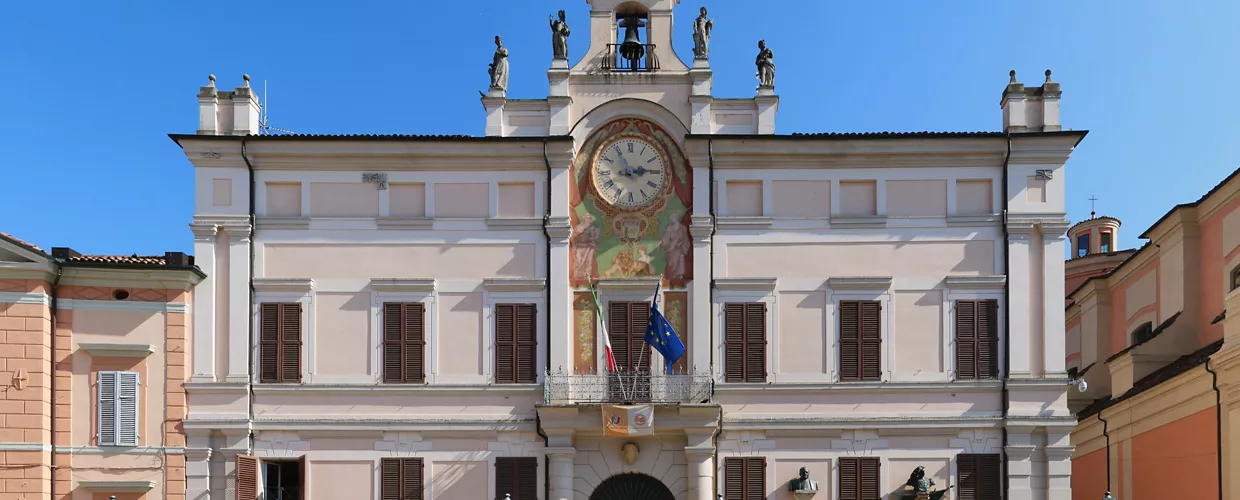This content was automatically translated. View the original text.


Overview
Orange Flag of the Italian Touring Club
About 20 km from Bologna, on the right bank of the Reno river, Pieve di Cento with its still intact medieval layout and almost 2 km of porticoes, is called 'little Bologna' and is characterised mainly by a singular spirit of unity and shared passion involving the entire community.
The historic centre and surrounding streets are rich in art and history, with many unmissable places: starting with the collegiate church of Santa Maria Maggiore in the main square, where you can admire magnificent works of art, such as the Annunciation by Guercino, The Assumption by Guido Reni and a wooden crucifix from the 14th century. The beautiful early 20th century building that housed the primary school is now home to the picture library 'The Schools', a cultural centre with exhibition areas, workshop spaces, auditorium, cafeteria and green spaces. Then there is the mighty Rocca of 14th-century origin, which houses the Pieve History Museum, while the Magi ‘900 is a museum of contemporary art with a rich collection of great 20th century masters (Burri, De Chirico, Modigliani, etc). One of the oldest buildings is the Home for the Elderly (1272), with wooden columns, formerly used as an inn, pilgrim shelter and horse post. The historic centre is accessed through four 14th-century gates: porta Asìa (location of the Hemp Museum), porta Cento, Ferrara (home to the School of Violin Making) and porta Bologna (home of the G. Melloni Digital Photographic Archive). In addition to the Violin making School, which testifies to the deep-rooted Pievese musical and craft tradition, the presence of the Music Museum set up in the foyer of the historic A. Zeppilli Theatre and the Music House designed by Mario Cucinella, make Pieve di Cento a true 'city of music'.
Pieve also does well at the table: in numerous historic establishments you can enjoy, among other things, lasagne, tortellini and the typical maccheroni al pettine, which is dedicated to a festival between June and July. Pieve di Cento is animated throughout the year by numerous events, such as the traditional carnival with parades of allegorical floats prepared by the 13 carnival societies, the traditional Pieve mask Barbaspèn and the Antiques market and reuse day (every fourth Sunday of the month).
It is the citizens' deep sense of community and belonging that has allowed Pieve di Cento to be a virtuous example of relaunch after the extensive damage suffered, especially to the historical and artistic heritage, by the 2012 earthquake.
40066 Pieve di Cento BO, Italia